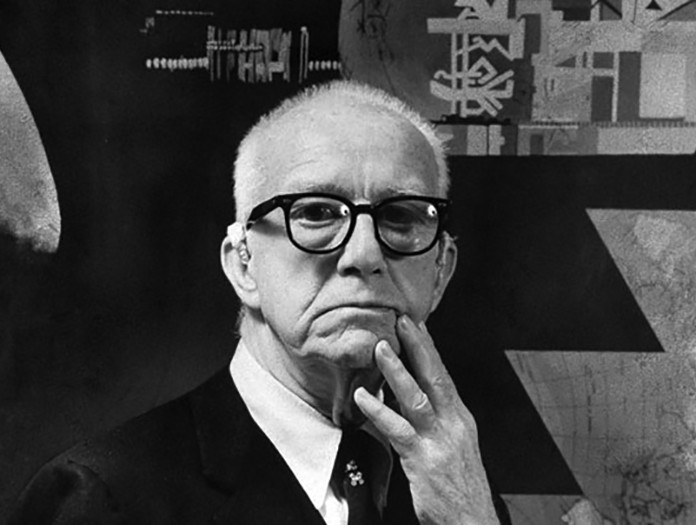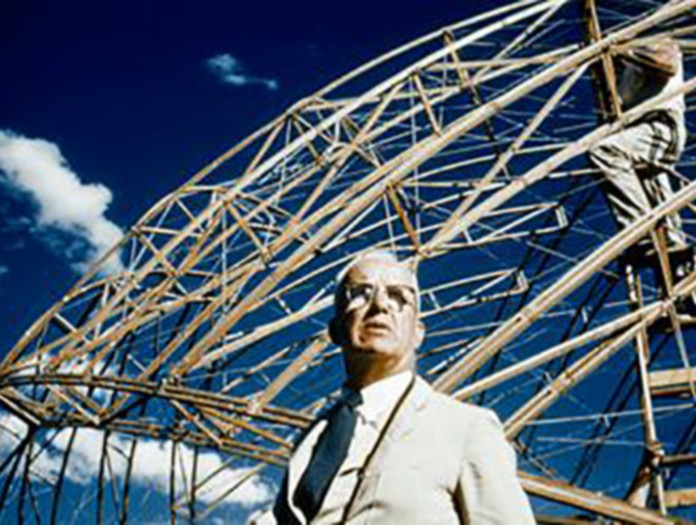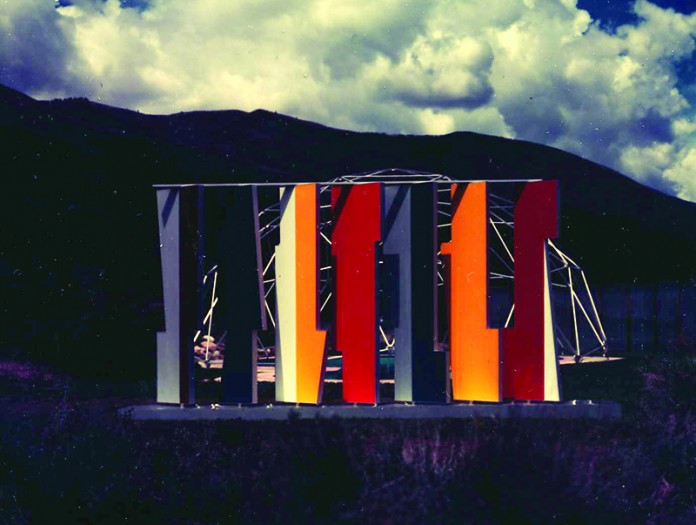Buckminster Fuller (1895-1983)
Education:
expelled twice from Harvard University due to lack of sustained interestEarly in his career, Bucky Fuller was involved in developing modular construction techniques for homes. He became increasingly interested in resource conserving building options. In the late 1920s, he created a prototype factory built house that could be airlifted to the desired location, and a high mileage per gallon car, both called Dymaxion.
Fuller is best known for the improvement and popularization of the geodesic dome, described as the only large dome that can be set directly on the ground as a complete structure. The geodesic dome remains structurally sound, with no limits to its size. Fuller became internationally associated with these buildings beginning in the 1950s. According to the Buckminster Fuller Institute, today there are more than 300,000 geodesic domes around the world, ranging from shelters in California and Africa to radar stations in remote locations, as well as geodesic structures on countless chidren’s playgrounds.
The Buckminster Fuller Institute says, “hailed as one of the greatest minds of our times, R. Buckminster Fuller was renowned for his comprehensive perspective on the world’s problems. For more than five decades, he developed pioneering solutions that reflected his commitment to the potential of innovative design to create technology that does ‘more with less’ and thereby improves human lives.
Throughout his life, Fuller found numerous outlets for his innovative ideas. During the early 1930s he published Shelter magazine, and from 1938 until 1940 he was science and technology consultant for Fortune magazine. During the 1940s he began to teach and lecture at universities, including Harvard and MIT, and in the late 1950s he became a professor at Southern Illinois University (SIU), where he and his wife lived in a geodesic dome when he was in residence. In 1972 he was named World Fellow in Residence to a consortium of universities in Philadelphia, including the University of Pennsylvania. He retained his connection with both SIU and the University of Pennsylvania until his death. He was the author of nearly 30 books, and he spent much of his life traveling the world lecturing and discussing his ideas with thousands of audiences. Some of Fuller’s many honors highlight his eclectic reputation: For example, because he sometimes expressed complex ideas in verse to make them more understandable, in 1961 he received a one-year appointment to the prestigious Charles Eliot Norton Professorship of Poetry at Harvard. After being spurned early in his career by the architecture and construction establishments, Fuller was later recognized with many major architectural, scientific, industrial, and design awards, both in the United States and abroad, and he received 47 honorary doctorate degrees. In 1983, shortly before his death, he received the Presidential Medal of Freedom, the nation’s highest civilian honor, with a citation acknowledging that his “contributions as a geometrician, educator, and architect-designer are benchmarks of accomplishment in their fields.”
Fuller’s association with Aspen began with the 1952 Aspen Design Conference, where he constructed a dome with a group of his students at University of Minnesota. A c.1955 dome was built as a climate control device for the Aspen Meadows Health Center pool. This dome was later relocated, and has recently been substantially reconstructed and covered in fabric, for use as a meeting space on the campus.




